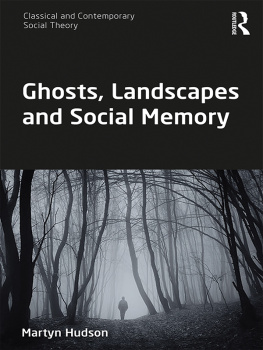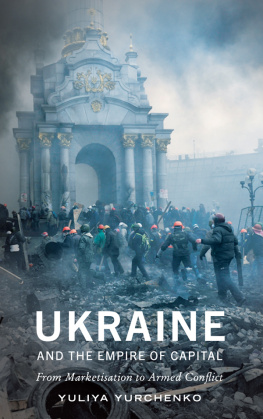
Visualising the Empire of Capital
Methods of visualising modernity and capitalism have been central to classical social science. Those methods of seeing, specifically in the work of Marx, were attempts to capture visually the fragmenting edifice of capital in its death throes and were part of a project to hasten its demise yet capitalism persisted and perpetuated itself in new forms, such that its demise now looks less likely than it did 150 years ago. This book argues for a new way of understanding Marx and a new way of approaching both capitalist modernity and Marxs Capital by rethinking the nature of vision. Through studies of visualisation in relation to machines and the monstrous, memory, mirrors and optics, and the invisible, Visualising the Empire of Capital offers a new way of thinking about what capital is and its future. A new reading of and against Marx, this volume argues for new forms of sensual utopia while initiating antagonism to the empire of capital itself. As such, it will appeal to social theorists, social anthropologists and sociologists with interests in critical theory, visual culture and aesthetics.
Martyn Hudson is Lecturer in Art and Design History at Northumbria University, Newcastle, UK. He is the author of Critical Theory and the Classical World, The Slave Ship, Memory and the Origins of Modernity, Species and Machines, and Ghosts, Landscapes and Social Memory.
Visual Modernities
Series Editor:
Martyn Hudson, Northumbria University
The sociological imagination of modernity is entangled with our senses and, primarily, with vision, yet the process of being able to see something is often extraordinarily complex. Marxs attempt to visualise commodities, Durkheim on totems of religious life, Simmel on money and the metropolis, Elias on social taste, are all projects which attempt to see beyond the empirical and into levels of abstraction and immateriality that lie beyond the senses. Visualisation is part of the making of modernity and a response to it.
This series explores and elaborates upon our experiences of modernity. It offers ways of seeing from the margins of our world and from its exemplary sites of industry and urbanisation. Grand narratives of human history mix with micro-histories that are embedded across our globe. Using multi-disciplinary methods, it seeks to expand upon our knowledge of global and local visual cultures, whether in architecture, painting, film, photography, theatre, film and other cultural forms. Examining the material and the tangible as well as the immaterial and the imaginary it aims to offer the best of sociological thinking and thought: literally re-visioning our social world.
Visual Modernities welcomes new studies that have visualisation at their heart and embed new ways of perceiving our shared world and our multiple and complex experience of modernity. It seeks to publish works that are innovative, multi-disciplinary in scope and which challenge and rupture the classical social sciences with new ways of looking at method, theory and our social futures.
Titles:
Visualising the Empire of Capital
Martyn Hudson
First published 2020
by Routledge
2 Park Square, Milton Park, Abingdon, Oxon OX14 4RN
and by Routledge
52 Vanderbilt Avenue, New York, NY 10017
Routledge is an imprint of the Taylor & Francis Group, an informa business
2020 Martyn Hudson
The right of Martyn Hudson to be identified as author of this work has been asserted by him in accordance with sections 77 and 78 of the Copyright, Designs and Patents Act 1988.
All rights reserved. No part of this book may be reprinted or reproduced or utilised in any form or by any electronic, mechanical, or other means, now known or hereafter invented, including photocopying and recording, or in any information storage or retrieval system, without permission in writing from the publishers.
Trademark notice: Product or corporate names may be trademarks or registered trademarks, and are used only for identification and explanation without intent to infringe.
British Library Cataloguing in Publication Data
A catalogue record for this book is available from the British Library
Library of Congress Cataloging-in-Publication Data
Names: Hudson, Martyn, author.
Title: Visualising the empire of capital / Martyn Hudson. Description: Abingdon, Oxon; New York, NY : Routledge, 2019. |
Series: Visual modernities | Includes bibliographical references.
Identifiers: LCCN 2019019693 (print) | LCCN 2019980571 (ebook) | ISBN 9780367197834 (hbk) | ISBN 9780429243233 (ebook) | ISBN 9780429516382 (epub) | ISBN 9780429512957 (pdf) | ISBN 9780429519819 (mobi)
Subjects: LCSH: CapitalismSocial aspects. | Civilization, Modern. | Visual sociology.
Classification: LCC HB501 .H7836 2019 (print) | LCC HB501 (ebook) | DDC 306.3dc23
LC record available at https://lccn.loc.gov/2019019693
LC ebook record available at https://lccn.loc.gov/2019980571
ISBN: 978-0-367-19783-4 (hbk)
ISBN: 978-0-429-24323-3 (ebk)
This project has had a gestation period of over twenty years and is marked by the presence of early teachers including the late Colin Tipton, Keith Macdonald and Martin OBrien. My rethinking of forest cultures owes much to dialogues with Tim Collins, Baz Nichols, Dougald Hine, Gavin Parry, Mick Garratt, Mike Woolley, Amy Cutler and Nick Stone, and part of the origin of that thinking was due to Nicks own reflections on the landscapes and woods of the Somme. My understanding of capital and its potential futures owes much to the late Moishe Postone and to Kevin Stenson, Paul Watt, Simon Renton, Mark Bould, Greg Tuck and specifically to those in Workers Liberty and Plan C groupings including Cathy Nugent, Martin Thomas, Sacha Ismail and Lawrie Coombs. I would also like to thank Alan Johnson, Pete Cookson, James Bloodworth, David Hirsh, Adrian Leon, Richard Gold, Steve Cooke and others for their shared political projects. For many years I have been studying the legacy and implications of the Socialisme ou Barbarie group and specifically Cornelius Castoriadis, and would like to acknowledge the work of and conversations with David Ames Curtis, Scott McLemee, Paul Anderson, John Bowers, Eileen Fradenburg Joy, Neil Jenkings and Ian Hughes. I would like to thank Neil Jordan and Alice Salt at Routledge for their continuing support and inspiration. My colleagues in the Visual and Material Cultures group at Northumbria have also supported conversations and I would like to thank Kay Hepplewhite, Matthew Kelly, Ysanne Holt, Tanya Wyatt, Julie Crawshaw and Susan Ashley. Jean Mohr and John Berger passed away as I was writing this book and I would like to thank Race and Class and Rethinking History for supporting my work with Jean and John on critical reviews of their careers and ideas. Thanks go to Emily Hesse for her co-thinking and critical insights and to my daughters Olivia and Rosa. This book is dedicated to Richard Ian Meredith Hughes for thirty years of conversations which began with the Situationist International and never ended.
The capacity to see is part of the biological apparatus of human beings and of other species. Histories of blindness have often focused on not being able to see as a kind of deficit or disappearance. Our senses and their absence are part of how we endure and experience our world as nature or as part of social formations. It may be that we have deficits and disappearances even when our visual apparatus is intact and that there may be such a thing as social myopia or problems in our social vision. This book is how we come to see and not to see capital as both an idea and an entire empire or civilisation. Indeed we cannot just see capitalism. We may see part of it, or parts that express it symbolically but we cannot bring to our senses an entire civilisation. That relation between the concrete moment and place of the observer and the abstract visualisation of an entire planetary empire is of course a polarity. It may be that the only way we can conceive of that relation, outside of our immediate senses, is through a radical act or set of acts of imagination. This then begs the question whether those imaginaries are the productions of individual will or even psychosis or whether they are socially conceived, formed and elaborated.









